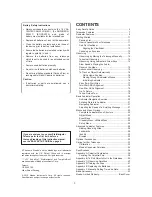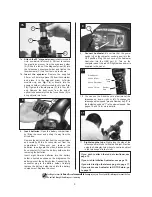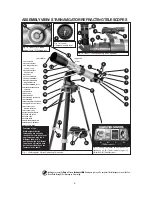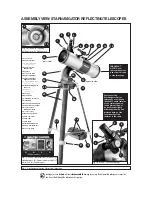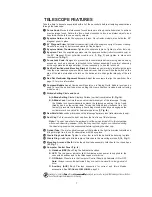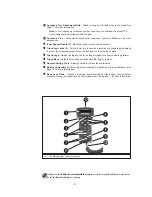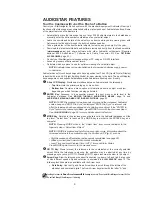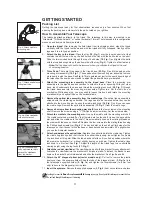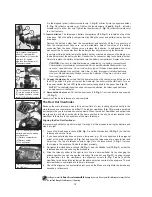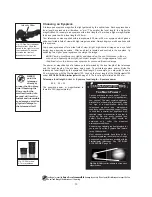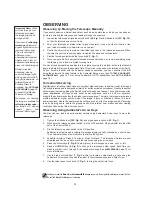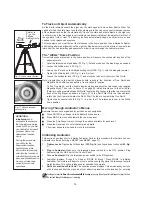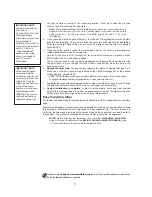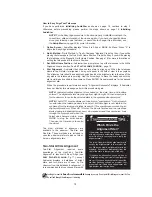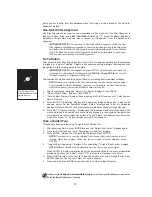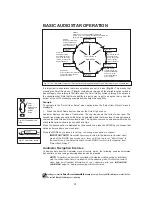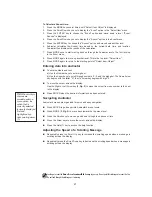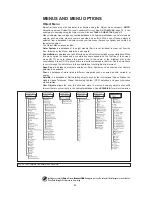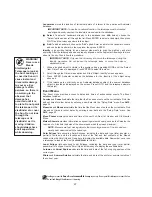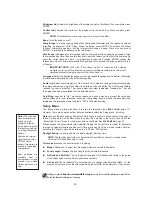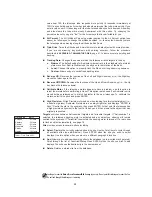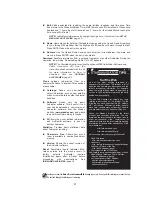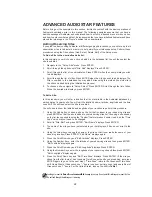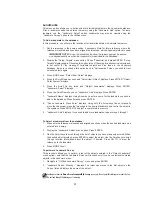
15
Slew Speeds
Audiostar has nine slew speeds that are directly proportional to the sidereal rate (see
TO TRACK
AN OBJECT AUTOMATICALLY
on page 16 for a definition of "sidereal rate") and have been
calculated to accomplish specific functions. Pressing a number key changes the slew speed,
which is shown for about two seconds on Audiostar’s display.
The nine available speeds are:
쩦
Number 1
=
1x
=
1 x sidereal (0.25 arc-min/sec or 0.004°/sec)
쩦
Number 2
=
2x
=
2 x sidereal (0.5 arc-min/sec or 0.008°/sec)
쩦
Number 3
=
8x
=
8 x sidereal (2 arc-min/sec or 0.033°/sec)
쩦
Number 4
=
16x
=
16 x sidereal (4 arc-min/sec or 0.067°/sec)
쩦
Number 5
=
64x
=
64 x sidereal (16 arc-min/sec or 0.27°/sec)
쩦
Number 6
=
0.5°
=
120 x sidereal (30 arc-min/sec or 0.5°/sec)
쩦
Number 7
=
1°/s
=
240 x sidereal (60 arc-min/sec or 1°/sec)
쩦
Number 8
=
1.5°/s
=
360 x sidereal (90 arc-min/sec or 1.5°/sec)
쩦
Number 9
=
Max
=
(Maximum speed possible, dependent on battery power)
Speeds 1, 2, or 3: Best used for fine centring of an object in the field of view of a higher power
eyepiece, such as a 12 mm or a 9 mm eyepiece.
Speeds 4, 5, or 6: Enables centring an object in the field of a low-to-moderate power
eyepiece, such as a standard 26 mm eyepiece.
Speeds 7 or 8: Best used for rough centring of an object in the eyepiece.
Speed 9: Moves the telescope quickly from one point in the sky to another.
Playing the Audio
The StarNavigator telescope is equipped with Astronomer Inside technology. This revolutionary
technology provides object descriptions of night sky objects while you are viewing them. Object
descriptions for the Moon, planets, stars, clusters, nebulae and galaxies are presented by
Astronomer Inside. Information such as temperature, size, distance and mythology are
presented in a fun and entertaining way.
To activate Astronomer Inside technology a night sky object needs to be selected. To select an
object, go to the Object menu. See page 22 for instructions on navigating the Objects menu.
Once an object is selected on the AudioStar, an audio presentation for that object will begin to
play. While the audio is playing, the volume can be adjusted by pressing the 7 (volume down)
or 9 (volume up) keys. To skip the current audio file and play the next, press the ? key. If there
are no other audio files for that object, the audio will stop playing.
Observe the Moon
Point your telescope at the Moon (note that the Moon is not visible every night) and practice
using the Arrow keys and the slew speeds to view different features. The Moon contains many
interesting features, including craters, mountain ranges, and fault lines. The best time to view
the Moon is during its crescent or half phase. Sunlight strikes the Moon at an angle during these
periods and adds a depth to the view. No shadows are seen during a full Moon, causing the
overly bright surface to appear flat and rather uninteresting.
Consider the use of a neutral density Moon filter when observing the Moon. Not only does it cut
down the Moon's bright glare, but it also enhances contrast, providing a more dramatic image.
Astronomical Observing
Used as an astronomical instrument, your telescope has many optical and electromechanical
capabilities. It is in astronomical applications where the high level of optical performance is
readily visible.
NOTE:
Do not look through
the telescope's
eyepiece or
viewfinder while it is
rapidly moving.
Children should
always have adult
supervision while
observing.
TIP: When a
message is scrolling
across the display,
press and hold the
Up Arrow key to
increase the scrolling
speed or press and
hold the Down Arrow
key to decrease the
scrolling speed.
Looking at or near the
Sun
will cause
irreversible
damage to your eye. Do not point this telescope at or near the Sun.
Do not look through the telescope as it is moving.
TIP:
StarNavigator
shortcut keys:
"7" Volume down
"9" Volume up
"?" Stop/skip selected
audio file

